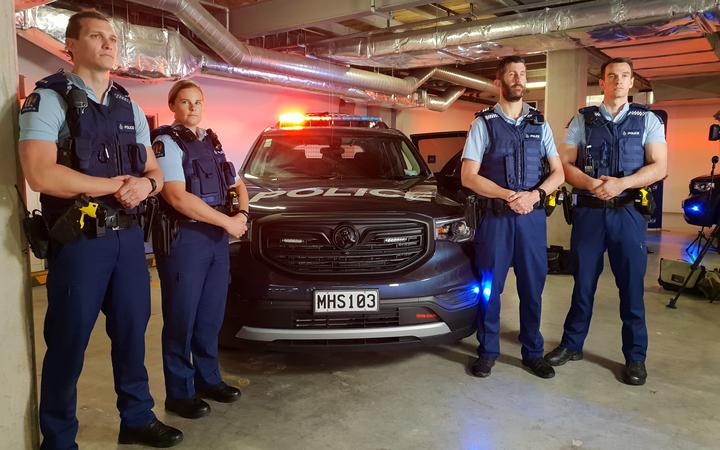New figures obtained by RNZ show last year had the highest rates of gun crime and deaths involving firearms for nearly 10 years.
 Photo: Claire Eastham-Farrelly/RNZ
Photo: Claire Eastham-Farrelly/RNZ
But despite that rise, there has not been a corresponding increase in officers taking out or using their guns.
The figures, obtained from police under the Official Information Act, show the rates of gun crime went up in both 2018 and 2019.
Last year, there were 3540 occasions where an offender was found with a gun.
And in both of the last two years, the rate of deadly incidents involving a firearm was the highest it had been since 2009.
The number of guns seized by police is also on the rise, up almost 50 percent on five years earlier at 1263 last year.
An officer was attacked by someone wielding a gun 13 times in 2019,
up two on 2018 but remaining steady over the past five years.
The data is also broken down by region, and shows Counties Manukau is
now the deadliest for gun violence in the nation, surpassing Eastern,
Central and Northland for rates of gun-related deaths.
In the past two years, there have been eight fatal incidents
involving a gun in Counties Manukau, almost a third of all incidents
nationwide.
The 15 March terror attacks were listed as two separate firearms-related incidents.
Auckland City councillor Alf Filipaina said there are several factors
that could be leading to an increase in gun crime, and top of the list
is gangs.
"I don't know whether it's about the accessibility to firearms ...
all I know is that we need to get the details behind the offences.
"It's hard to pinpoint, [if] it's because of the gangs or because of drugs, or domestics, without knowing the details behind."
On a global scale, gun crime remains incredibly low in New Zealand.
For instance, in the United States there are about 106 deaths per 1 million population each year.
In each of the last two years, New Zealand recorded 2.4 gun-related deaths per million people.
But if you go back to 2014, New Zealand had less than 1 death per
million people, so there has been a steep rise over the past few years.
In the face of increased firearms use, the police data shows officers are not doing the same.
Police assistant commissioner Tusha Penny said policing is a scary job, and officers are taking on a great deal of risk.
But the data shows officers presented their firearms 305 times in 2019, while faced with more than 3500 firearms incidents.
In 2016, officers pulled their guns 456 times, when faced with 237 fewer firearms incidents.
 Tusha Penny said an increase in firearms offences has not led to an increase in police presenting firearms.
Photo: RNZ
Tusha Penny said an increase in firearms offences has not led to an increase in police presenting firearms.
Photo: RNZ
"What we're putting that down to, firstly is recruitment. We're recruiting the right people into the police," Penny said.
"It's also our training. When we look at all of that in a really fast
changing, dynamic situation, it is creating a really good picture.
"Some people would think increased firearms offences would naturally
play out with an increase in police presenting firearms, and that's just
not the case.
"It hasn't been the case over the past decade."
Despite the numbers, there has been increasing concern about the general arming of the police.
After the 15 March attacks, police in several parts of the country have had to routinely arm when faced with certain threats.
Police also ran their Armed Response Team - or ART - trials over summer, which were widely opposed by some groups.
 Police officers pose with the special patrol vehicle that was used during the ART trials.
Photo: RNZ / Liu Chen
Police officers pose with the special patrol vehicle that was used during the ART trials.
Photo: RNZ / Liu Chen
Police Association president Chris Cahill said having those trained experts acts as a deterrent.
"I really think that, and the statistics will show this when the
review of ART's is done, having higher trained staff that turn up with
better tactical training and can respond immediately, probably actually
prevents the need to use their firearms.
"They can contain and control a situation even better than one or two lone officers without that support."
The firearms data also shows the worst rates of gun crime by region.
Northland, Eastern and Bay of Plenty still have the highest rates of
gun crime in the country per capita, while Counties Manukau and Waikato
are the deadliest regions.



Comments
Post a Comment